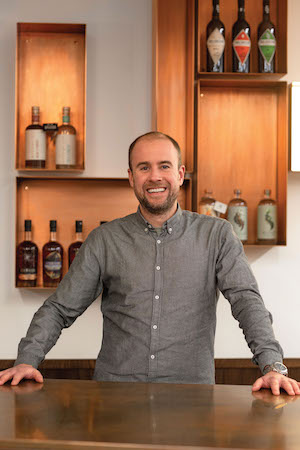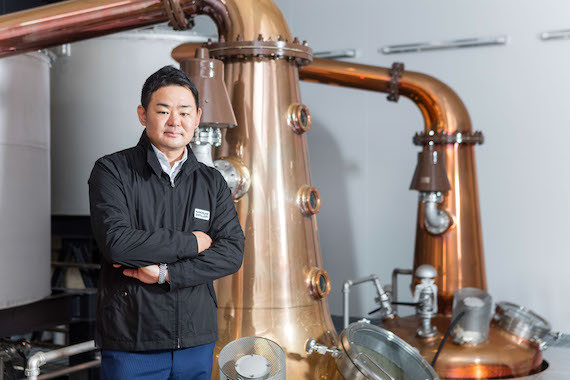Japanese whisky has been dominated by two producers over the past few decades when it comes to both quantity and quality. Nikka and Suntory are without doubt the torchbearers for the category with rich portfolios of well-respected malts.
Last year Suntory’s Yamazaki topped Drinks International’s list of The World’s Most Admired Whiskies; and more recently at the International Spirits Challenge 2022 the two producers took home 32 of the 42 gold medals awarded to the category. However, the ongoing stock issues combined with a rife obsession from the West present an opportunity for more premium or craft brands to take some market share.
Kyushu is the third largest of Japan’s four main islands and is famous for its shochu culture. Shochu means ‘burnt alcohol’ in Japanese, is largely made from sweet potato, rice and wheat, and is a fundamental part of life for the Kyushu’s 13 million inhabitants. However, while shochu sells in vast volumes domestically, its international appeal outside expat hotspots is relatively limited, leaving several companies turning to whisky production as a more financially sustainable alterative for the future.
Japan exported ¥46bn (US$340m) of whisky in 2021, according to government statistics published by Nikkei Asia, which is a 70% increase on the previous year and more than four times that of 2016. And while still in the black, shochu exports have increased just 19% over the same period.

PREMIUM UPRISING
Kanosuke Distillery was founded by shochu producer Komasa Jyozo in 2017 and in 2021 launched its first single malt. The parent company dates back to 1883 and is recognised for pioneering the use of oak casks for ageing the Japanese beverage. The current and fourth-generation president Yoshitsugu Komasa came to the realisation that whisky would be an easier sell than shochu in international markets, which led to the formation of Kanosuke. The brand uses both peated and non-peated malted barley imported from the UK to produce its single malt and in some cases has used ex-shochu casks from the family business for maturation to create more unusual expressions.
create more unusual expressions. The early success of Kanosuke attracted the financial backing of Diageo’s brand accelerator arm Distill Ventures, which has also invested in other top New World whiskies such as Starward from Australia and Danish brand Stauning.
Charlie Steel, whisky portfolio director at Distill Ventures, says: “I think what makes Japanese whisky so exciting right now is that consumers both in Japan and abroad, as they learn more, are looking for new and more authentic Japanese whiskies that have terrific liquids and inspiring stories – which leaves a terrific opportunity for new whisky distilleries in Japan.
“Right now the main focus is on Japan, but in the near future we will start to open up some key European markets such as the UK, France and Germany, before expanding in the US.”
Shindo Distillery is another example of a shochu producer turning to whisky. It began making whisky in the Fukuoka Prefecture city of Asakura in summer 2021 and the facility belongs to Shinozaki, a traditional barley shochu producer founded in 1922.
Michiaki Shinozaki, eighthgeneration family member, told Nikkei Asia that the company is branching out “because demand for Japanese whisky is skyrocketing”. He adds: “The whisky is geared toward the overseas market and we hope to sell around 70% of our product abroad.”
Meanwhile, in the Miyazaki prefecture town of Kijo, Osuzuyama Distillery began selling an unaged single malt in 2020 called Osuzu Malt New Born, which sold out online in a matter of minutes. Osuzuyama president Shinsaku Kuroki also oversees the parent company Kuroki Honten, which makes a shochu called Hyakunen no Kodoku.
“I was looking at new possibilities in shochu-making technology and our local produce when I started to think it’d be interesting to make whisky,” says Kuroki.
The company president also adds that it will start increasing sales at the end of this year, once the whisky has been aged for at least three years. “I want to reach not just the domestic market, but the world as well,” he says.

RULES AND REGULATIONS
As Kuroki suggests, it helps to adhere to the Japanese whisky regulations when entering foreign markets. Just last year the Japan Spirits & Liqueurs Makers Association announced a new set of bottling rules for Japanese whisky which bares resemblance to that of Scotch, albeit in a different location.
Despite some Japanese distilleries using native ingredients such as koji to make their own take on whisky for generations, the new regulations do not mention these traditional practices.
The general consensus is that the association is looking for consistency in exports to provide clarity, confidence and a quality guarantee to consumers around the world, thus growing Japanese whisky as a whole.
affect the major players like Nikka and Suntory – or brands such as Kanosuke which is following the new regulations – there are other products left in a potentially precarious position.
Shochu has been a part of Kyushu culture for hundreds of years, dating back as far as the 16th century. Many local distilleries are steeped in tradition – their production methods unchanged – and, according to Kyushu Spirits, which produces a range of koji-based Japanese whiskies, “every batch is as extraordinary as the people who distil them”.
Kyushu Spirits’ partner distilleries produce whiskies and spirits by combining traditional Japanese fermentation techniques and Western ageing methods to create what it refers to as a “new spirit of Japan”.
The company says: “A whisky is only as good as the ingredients that go into it. That’s why only locally sourced grains such as barley, buckwheat and rice from Kyushu are used. Combined with wood ageing and the same koji fermentation process pioneered by their ancestors before them, the resulting whiskies are truly unique in balance and flavour.”
It appears that while Japanese whisky continues to blossom in popularity overseas, the category is on the verge of divide. As Kanosuke’s Steel says, the demand for new premium brands is rising fast in exports, particularly in those thirsty markets with a mature understanding of the category.
Therefore, as well as some brand new distilleries, some of Japan’s oldest shochu producers have stepped up to try and capitalise on this gap in the market and in the long run this could even raise awareness for the ancient Japanese beverage overseas.
However, while international sales could be an open goal for these new brands coming to market, others using more traditional methods aren’t able to market themselves as Japanese whisky outside Japan and therefore could find themselves competing against shochu domestically, alienated from its own category.




